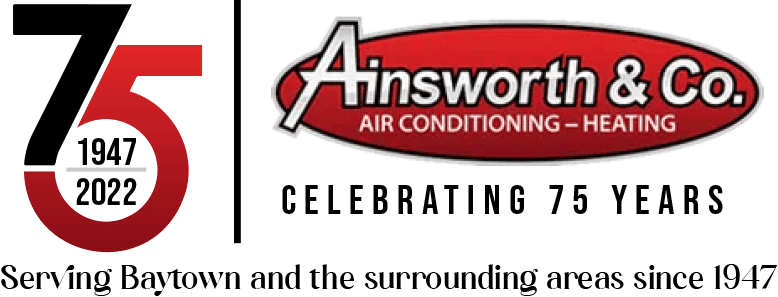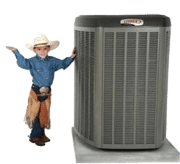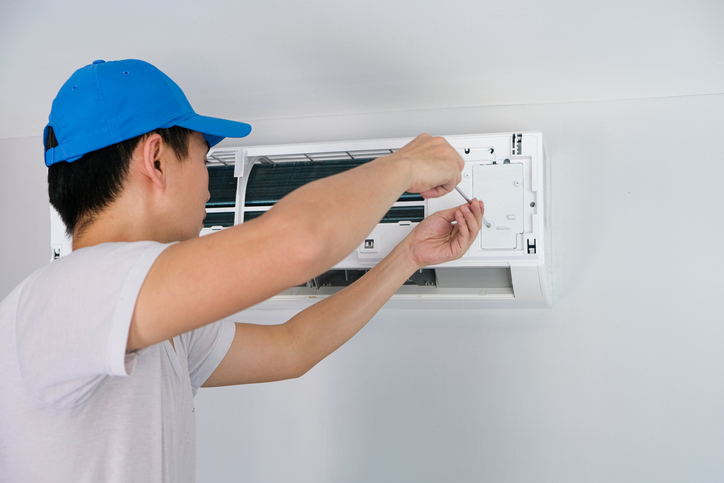Airflow plays a vital role in the efficiency and longevity of an air conditioning (AC) system. Proper airflow during AC installation guarantees the system operates at optimal performance levels, delivering cool, comfortable air throughout the home while minimizing energy usage and wear. This article explores the importance of proper airflow in the installation, focusing on how it impacts energy efficiency, system longevity, and comfort.
1. Understanding Airflow in Air Conditioning Systems
Airflow refers to the movement of air across the evaporator coil, condenser coil, and ductwork. During the installation, it’s essential to configure the system so that air moves freely through these components. Without sufficient airflow, the system cannot effectively remove heat, leading to inefficient cooling and potentially expensive repairs. Proper airflow guarantees that the AC system can properly regulate the indoor climate.
2. How Insufficient Airflow Affects Cooling Efficiency
When airflow is restricted, the air conditioning system can overheat, leading to inefficiency. Without adequate airflow, the AC unit must work harder to cool the space, increasing energy consumption. The system might have to run longer cycles to achieve the desired temperature, leading to higher electricity bills. Ensuring proper airflow during installation helps the system cool the space more efficiently, saving you money on energy costs.
3. The Role of Ductwork in Airflow Efficiency
Ductwork plays a significant role in the movement of air throughout the building. When installing an AC system, it’s crucial to guarantee that ducts are properly sized and sealed to minimize air resistance. Poorly designed or leaky ducts can lead to significant airflow issues, reducing efficiency and comfort levels. Proper ductwork installation guarantees air is distributed evenly throughout the home, maintaining consistent temperatures in all rooms.
4. Air Filter Placement and Airflow
Air filters are essential for maintaining indoor air quality, but they can also affect airflow if not properly installed or maintained. A clogged or incorrectly sized air filter restricts airflow, forcing the AC unit to work harder. During installation, selecting the right filter and placing it properly is crucial for maintaining optimal airflow and ensuring the system doesn’t become strained. Regular maintenance of the filter can also prevent airflow issues.
5. Impact of Proper Airflow on System Longevity
Proper airflow is not just about comfort and energy efficiency—it also impacts the longevity of your AC unit. When airflow is restricted, the system can overheat, causing components like the compressor to wear out faster. This shortens the lifespan of the AC system, leading to more frequent repairs and earlier replacements. Ensuring proper airflow during installation and maintenance can extend the life of your system, saving you money on repairs and replacements.
6. Balancing Airflow with System Size
One of the most important considerations during the installation is ensuring that the system is appropriately sized for the space. An oversized or undersized unit can create airflow problems. A system that is too large will cycle on and off too frequently, disrupting airflow and causing uneven cooling. Conversely, a system that is too small will struggle to keep up with demand, leading to inefficient airflow and excessive wear. A professional HVAC technician can properly size your system to guarantee optimal airflow.
7. The Importance of Proper Ventilation in AC Systems
While airflow focuses on the movement of air through the system, ventilation is the process of introducing fresh air into the system and removing stale air. Adequate ventilation is necessary to maintain healthy indoor air quality and guarantees proper airflow. It’s crucial to account for ventilation needs to guarantee a balanced system that promotes healthy air circulation.
8. Common Airflow Issues
Several common issues csn negatively affect airflow. These include improperly installed ducts, undersized or blocked ducts, poor filter placement, and the use of incompatible or low-quality components. A qualified HVAC technician can identify these issues and address them during installation, ensuring proper airflow and system efficiency.
9. How Proper Airflow Improves Comfort
Proper airflow during AC installation directly impacts comfort levels in your home. When airflow is optimized, the AC can maintain consistent temperatures across rooms, ensuring that no area is too hot or too cold. Additionally, proper airflow reduces humidity levels and guarantees that air is evenly distributed, creating a more comfortable indoor environment.
10. Regular Maintenance and Airflow Optimization
Proper airflow doesn’t end with installation—it requires regular maintenance to guarantee that the system continues to operate at its best. Routine maintenance tasks, such as cleaning or replacing air filters, checking ducts for blockages, and inspecting the AC unit, can help optimize airflow and prevent issues before they arise. Scheduling annual maintenance with a qualified technician guarantees that your system maintains proper airflow for years to come.
Proper airflow is essential for an efficient and long-lasting air conditioning system. From enhancing cooling efficiency and reducing energy costs to improving system longevity and indoor comfort, proper airflow during AC installation sets the stage for optimal performance. To keep your AC running smoothly, guarantee that your system is properly sized, the ductwork is correctly installed, and the air filters are maintained regularly.
Is your air conditioner operating at its best? Call 281-837-8454 to schedule a professional inspection from our experts at Ainsworth & Co. to guarantee proper airflow and maximize your system’s efficiency and longevity. Don’t wait for problems to arise—maintain your AC and stay comfortable year-round!











